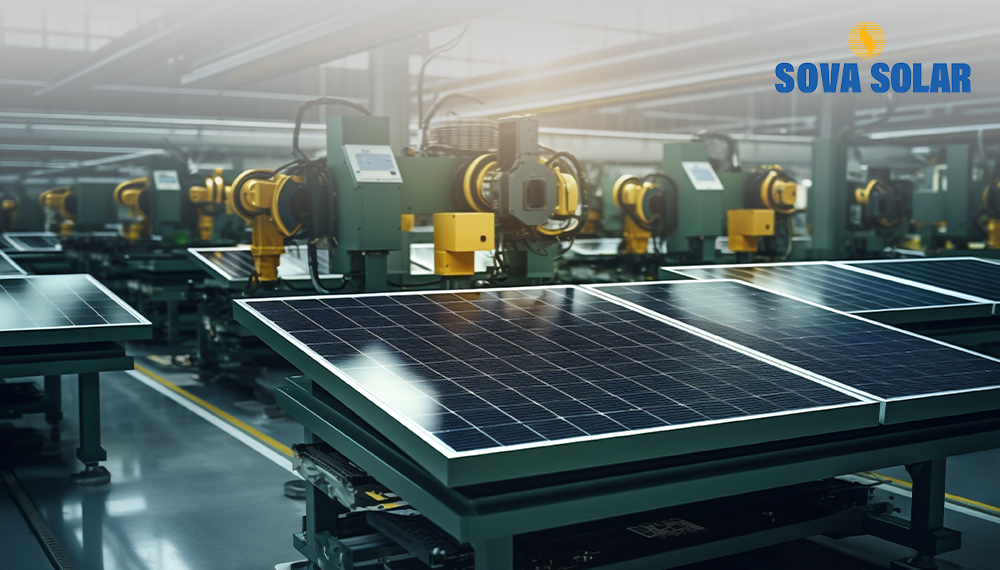
- sovasolar_admin
- Jul 9, 2025
- Uncategorized
- 0 Comments
Installing a solar plant on your facility’s rooftop or premises isn’t just a short-term project—it’s a long-term energy investment. When designed and installed correctly, solar systems can generate electricity reliably for 25 years or more.
But before switching to solar, there’s an important question to ask:
Is your facility ready to support this 25-year energy asset?
Many businesses jump into solar because of rising energy costs, sustainability goals, or government incentives. But a successful solar project needs more than sunlight and empty rooftop space. It needs planning, structure, and long-term thinking.
This Solar Readiness Checklist will help you assess if your industrial, institutional, or commercial facility is ready to make the most out of a solar investment.
1. Assess Your Roof or Installation Area
A solar panel system is only as good as the surface it sits on. Start with your rooftop or available land area.
Ask yourself:
- Is the roof structurally sound and capable of handling additional weight?
- Is there enough open space without shade from trees, buildings, or equipment?
- Is the surface flat or slightly sloped for optimal sunlight capture?
- Is the roofing material compatible with mounting structures?
In India, flat concrete rooftops are ideal for solar, and even metal sheds can be suitable with the right mounting setup. For ground-mounted installations, the soil type, layout, and accessibility matter.
If you’re unsure, a manufacturer or solar EPC partner like Sova Solar, which has worked across Indian regions like Delhi, Kolkata, Rajasthan, and Maharashtra, can help inspect and evaluate your site conditions.
2. Understand Your Energy Consumption
Your solar system should match your actual energy needs. That means analyzing your facility’s electricity bills and consumption patterns.
Check for:
- Monthly energy usage (kWh)
- Peak load times and seasonal variations
- Major energy-consuming machinery or systems
- Whether your usage is mostly daytime-based (when solar production peaks)
This data will help size the system correctly—so you don’t overpay for a system too large or miss out on savings with a system too small.
3. Know Your Grid Connection & Metering Type
For industrial and commercial buildings, the type of grid connection plays a role in system design.
You should know:
- Are you connected to low-tension (LT) or high-tension (HT) supply?
- Does your state’s policy allow net metering or gross metering?
- Is your local DISCOM (power distribution company) supportive of rooftop solar?
In India, state policies vary. Some allow exporting excess solar power back to the grid, reducing your bill even more. Knowing your metering options helps plan for maximum cost recovery.
4. Check Long-Term Maintenance Capabilities
A solar panel system is mostly low-maintenance—but it still needs occasional cleaning and inspections. Over 25 years, performance can drop if the panels are neglected or exposed to extreme conditions.
Before going solar, make sure:
- Your team can handle basic maintenance tasks like panel cleaning
- The site is accessible for technicians and inspectors
- You’re open to working with a reliable manufacturer who can provide support if needed
For example, Sova Solar’s panels are designed to perform well even in dusty, high-temperature Indian environments, and are backed by global certifications like IEC, CE, and UL—meaning they’re built for long-term performance.
5. Evaluate Internal Buy-In and Planning
Installing a solar plant is more than just a technical decision—it’s a strategic move. It impacts operations, finances, and environmental goals.
Make sure:
- Your management team is aligned on goals, budget, and timeline
- The finance department understands ROI, depreciation, and payback period
- You’ve discussed space-sharing with other departments (e.g., rooftop ventilation systems, maintenance paths)
Facilities that treat solar as a core infrastructure investment—not just a green initiative—tend to get better long-term results.
6. Choose the Right Solar Technology
Different facilities have different needs. The right technology makes your system more efficient and long-lasting.
Decide whether you need:
- Polycrystalline modules – cost-effective, suitable for large spaces
- Mono-PERC or bifacial modules – higher efficiency, ideal for limited area
- High-temperature-tested panels – for regions with intense heat and sun
Sova Solar offers both polycrystalline and Mono-PERC bifacial modules, manufactured under ISO-certified conditions, and tested for desert and tropical climates—making them well-suited for industrial and institutional applications in India.
7. Review Financial and Regulatory Readiness
Solar projects come with upfront costs. Some companies self-finance, while others explore government subsidies, loans, or PPAs (Power Purchase Agreements).
Before you proceed:
- Get clarity on your solar budget
- Explore state and central subsidies or tax benefits
- Ensure your facility has required permissions for installation and grid synchronization
While not all projects need third-party financing, understanding your options helps you make the most informed decision.
Bonus: Think About the Bigger Picture
Going solar isn’t just about saving money—it’s about building a resilient, future-ready facility. A well-planned solar plant:
- Reduces your carbon footprint
- Enhances your green branding and ESG profile
- Contributes to India’s renewable energy targets
- Gives you more control over long-term energy costs
Final Thoughts
A solar panel system can serve your facility for the next 25 years or more. But like any high-value asset, it needs proper planning and site readiness.
Here’s a quick recap of your Solar Readiness Checklist:
- Strong, unshaded rooftop or land area
- Clear understanding of your energy usage
- Compatible grid connection and metering setup
- Long-term maintenance plan
- Internal planning and financial buy-in
- Suitable technology selection
- Financial and regulatory preparation
If you can confidently check off most of these boxes, your facility is well on its way to becoming solar-ready.
And with trusted Indian manufacturers like Sova Solar, who provide certified, high-performance modules and have a footprint across India’s most challenging climates—you can turn that readiness into a powerful, long-term energy solution.






